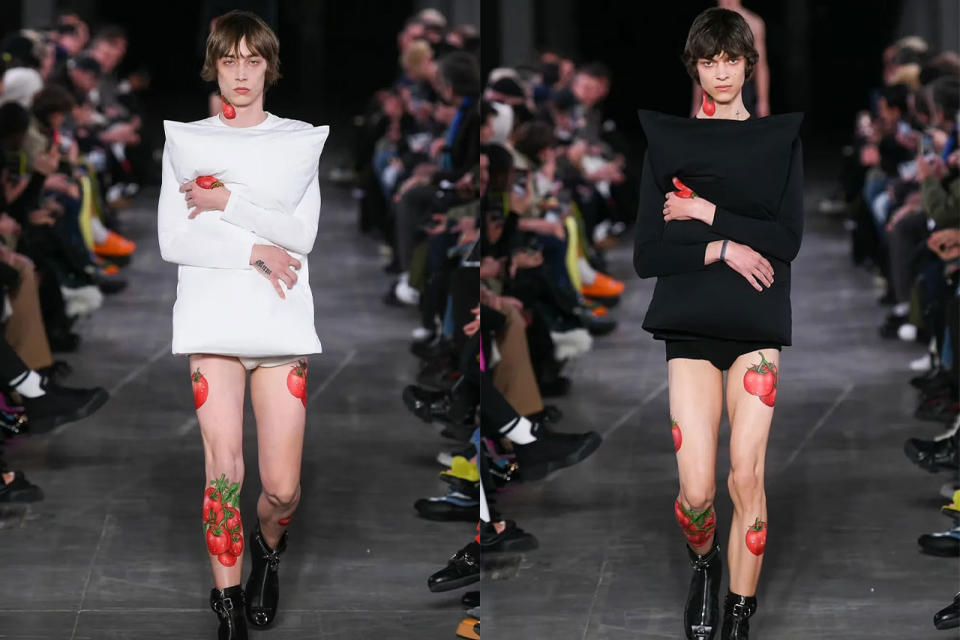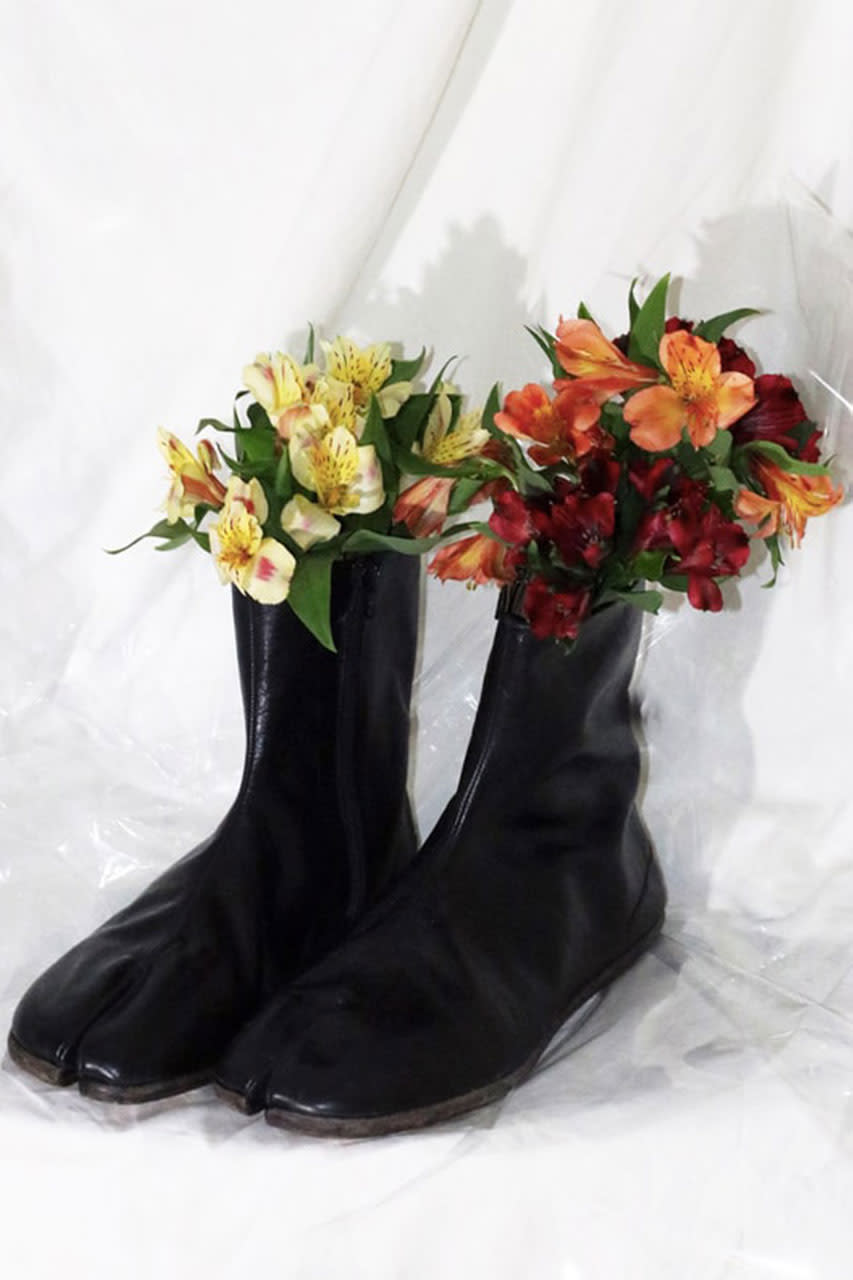What Brings the Mob Wife, Clean Girl and Tomato Girl Trends Together?
Fashion loves to borrow from other cultures. If you've seen runways accessorizing with pieces common to your heritage or trends surfacing that your grandma rocked in old photos, you're not alone.
Usually, designers will credit the communities that inspired them. But, once the pieces leave the runway, they're subject to the attention economy where no one has the time or desire to understand what makes a piece unique. Instead, we focus on the social cache it provides us.
Tik Tok has only exacerbated this with its rapid trend cycles. The minute we start learning about the roots of a certain style, the next one has already blown up. From clean girl to now the mob wife aesthetic, some of the most popular looks in the past few years have been pioneered by BIPOC women.
So, let's dive into the cultural roots and give the women behind these trends their flowers.
Mob Wife
Exactly as the name alludes, the newest and hottest aesthetic emulates the badass women of crime. Think femme-fatales like Carmella Soprano, Adriana La Cerva and Teresa Mendoza who opt for maximalist looks centering big fur jackets, leopard print, and gold jewelry.
On Tik Tok, #mobwifeaesthetic has gone viral, amassing over 2.7 million views and growing by 72.3% in just the past day. Depop reports that searches for leopard print went up 213% this month with an uptick in search for other items like gold hoops, oval sunglasses and leather boots.
View this post on Instagram
A post shared by Adriana “Aid” La Cerva (@adrianaaa_la_cerva)
Needless to say, we are entering our mob wife era. But, the Italian-American women of New York City were here before us. For them, this style of dressing was a celebration of their hardships.
Most of these women came from working class backgrounds and, by marrying mafia bosses, they stepped into lives of danger and newly found wealth. The opulence of the gold jewels, fur and high heels signalled financial power and served as emotional armor, giving them confidence to take on anything.
In 2011, Jenn Graziano, the creator of VH1's, "Mob Wives" and daughter of a former mafia boss candidly shared that the lives of these women are "not all fancy clothes and cars. These women are now single moms trying to make it on their own."
Clean Girl
Hailey Beiber did not invent the slicked back bun, brownie glazed lips, or gold hoops look that had the internet in a choke hold. In fact, she didn't even popularize it. We have Black and Brown women to thank for 2023's most viral, clean girl look.
It began in the '60s, when Black Power feminist icons Josephine Baker, Nina Simone and Angela Davis sported hoops as a sign of their femininity and strength. Since then, hoops became intertwined with identity for Black women. Female R&B artists like Salt n Pepa brought them to the mainstream in the '90s by styling them in their music videos.

For South Asian women who have a generations long love affair with gold earrings, the gold serves as financial security. They treat them as heirlooms, passing the precious metal down to their daughters upon their marriage. It is a beacon of agency in a patriarchal society.
As for the glossy lips and slicked back hair, the Chola woman of Southern California wore them as a trophy. The look signified their hard won identity after the turmoil violence, gang warfare and poverty inflicted. Eventually, the aesthetic trickled down to Naomi Campbell and Bollywood icons like Rekha who made glossy lips an everyday occurrence for Black and Brown Women.

Tomato Girl
The picturesque Mediterranean packaged for our screens in The White Lotus and Call Me By Your Name made summer 2023 the Tomato Girl summer. Think light fabrics like cotton and linen, woven bags, romantic silhouettes and nature inspired prints and colours shaping her wardrobe.
View this post on Instagram
The zeitgeist's collective embrace of the Tomato Girl parlays directly to our rejection of 2016 girlboss feminism and the post-pandemic Great Resignation. Women no longer want to be part of the corporate cog perpetuating patriarchal practices from a corner office. Instead, they want to embrace la dolce vita, or the good, slow life– or at the very least, they want to dress the part.
This trend was a great illusion for many because it afforded the look of luxury and slowness without breaking the bank. By nature, the pieces are timeless, enabling them to be heavily thrifted.
Recently, Depop reported a 644% increase in search for linen trousers and 289% increase for woven bags. Fashion houses, too, are charmed by the tomato girl aesthetic, with Italian brand Dolce & Gabbana a repeat luminary, showcasing tomato prints in its Spring/Summer 2012 collection and again in its Spring/Summer 2017 line. Even JW Anderson's Fall/Winter 2024 collection featured tomato motifs and even had models strutting down the runway holding the fruit.

The timelessness and ubiquity of Tomato Girl originates from quite literally the dawn of time. The easy fabrics, clean lines, and earthy colors can be traced back to ancient Greek women.
Sculptures in museums have us believing the women wore white draped togas, but in actuality, their fabrics would be in light greens, reds, and yellows, with decorative motifs of "geometric or natural patterns, depicting leaves, animals, human figures, and mythological scenes" (Tex-Med Alliances Project). The colors on the sculptures faded over centuries of wear.
During the peak of the trend, content creators also referred to archival photos of tourists from the '50s, heroines from old Italian cinema, and vintage postcards to inspire their Tomato Girl wardrobes. The aesthetic is simply an homage to Mediterranean women since the beginning of time.
Tabis
People get their wallets stolen on the daily, but shoes? Unheard of… until the infamous Tabi Swipers made his rounds on the internet last September.
In a viral tik tok, social-media manager Alexis Douge takes to the internet to explain that a tinder date she brought home stole her $99o USD Tabis. Thanks to her video going viral and internet sleuths, Douge learned that her date gifted the shoes to his girlfriend.
The bizarre nature of it all boosted the otherwise niche Maison Margelia's Tabis searches by 200% just a couple days after Douge's Tik Tok according to the Lyst Index. The shoe morphed into a status symbol because of their "if you know, you know appeal." After all, the two toed shoe objectively borders ugly, so owning them must mean you're in the fashion know-all.
Margiela derived the Tabis from Japanese culture. Originally, they were two-toed socks available only to the elite in gold and purple. But, as Japan welcomed China as a trade partner, the increased cotton exchange enabled blue Tabis to be made for workers. It is believed that the split toe design promotes balance, and therefore a clear, productive mind for laborers.
In 1988, Margelia debuted the Tabis on the runway by dipping them in red paint. Models gallivanted down the runway, leaving oddly shaped footprints in their wake that wowed the crowd. Their appeal endures decades later.

Scrunchies
If you google who invented the scrunchie, you'll learn of Rommy Revson, an American hairdresser who wanted a gentler alternative to the traditional hair tie. For the popular scrunchies of the '80s and '90s, an American origin story is believable.
But, fast forward to 2023, and our scrunchies look different– they are bigger, with more layers and dramatic laces. Found on every it-girl's hands a couple months ago, ranging from Chloe Sevigny to Addison Rae, the 2023-scrunchies share an uncanny semblance with Flamenco costumes.
View this post on Instagram
Flamenco comes from Andalusia, located on the Southern tip of Spain. The highly expressive folk dance form is characterised by acoustic vocals, percussive footwork, and sweeping arm movements. The female dancers don floor length dresses that are trimmed with ruffles and traditionally in black, red, or other brightly coloured designs. In their hair, they will add an ornate comb, or peineta, and a luscious rose.
Modern day scrunchies wrapped around a wrist or a bun look most similar to the ruffles of the flamenco dancer's dress. When they hold the bottom of a braid together, they resemble the romantic roses peeking out of dancers' hair.

